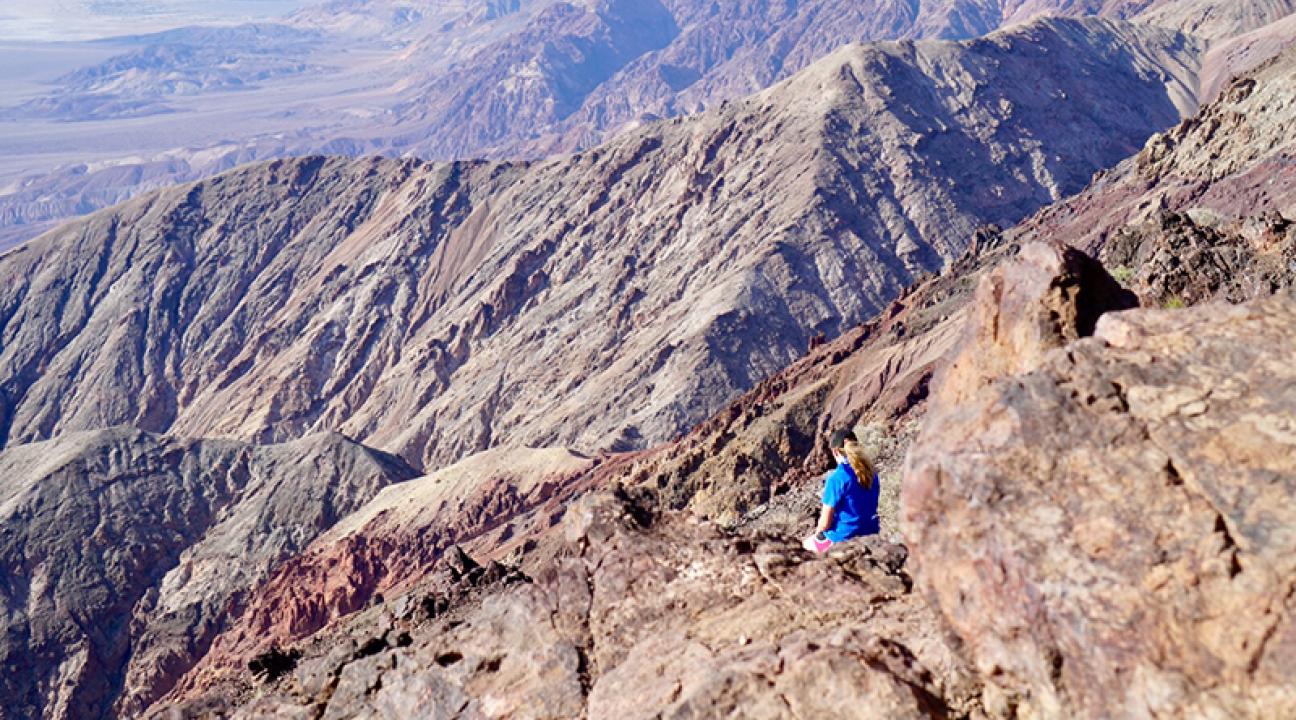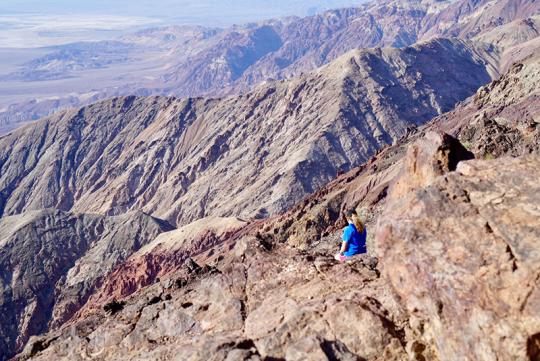Spring Break Hot Spot
New Spring Break 'Hot Spot' for Geology Students
abo, Vegas and Miami may be the trendy spring break spots, but for one group of Sonoma State University students the geologic wonderland of Death Valley was the hot place to be this spring.
Students in GEOL 420: Integrative Field Experiences spent their week south of Death Valley honing their ability to make valid geologic field interpretations through detailed field mapping and report writing. "The trip is strenuous both physically and mentally, but students always leave the field with greatly improved skills and much more confident in themselves as geologists," says Phil Mooney of the Sonoma State Geology Dept., who accompanied students with lecturer David Bero on the trip.
Students spend the week at the SHEAR Center (Shoshone Education and Research Center) in Shoshone, Calif., a cooperative research station that facilitates field trips and research in the Death Valley region. They're up for breakfast and to pack their lunch at 6 each morning and out in the field by 8:30. After a full day of geologic mapping, scrambling off trail, up and down the mountains in order to walk the contacts and observe the outcrops, they're back at the research center by 6 p.m. to eat, put their feet up, and get ready for the next day of mapping.
The capstone course of the geology major presents the students with the opportunity to demonstrate the skills they've acquired within their core courses.
It's the task of the 14 students in the class to identify the various rock units, observe the complex angular relations between them, record the orientation and structural trends within the units, and create a professional geologic map during their eight days of field work. Back in the classroom, students occupy the remainder of the semester with cataloging their observations and data in a summary of the geologic history of the area.
It's not all work, though. Death Valley National Park is home to some of the most incredible geology on display on a massive scale, and students are able to squeeze in a little entertaining geo-tourism.
"The combination of unique geology and perfect exposure of the rocks, due to the lack of vegetation, makes Death Valley a wonderful place to take in the sights and do some geologic arm waving," says Mooney.
Although the landscape may at first appear eternal and unchanging, the students learn first hand that it's anything but. The rocks have been buried, tilted, faulted, folded and deformed in the 500 million-plus years since they were deposited in a continental shelf environment in the Cambrian Period.
Students see the unique "turtlebacks" and walk the lowest point in the continental U.S. at Badwater (282 feet below sea level), view the evaporates at the Devil's Golf Course, explore the ancient deformed lake bed deposits at Zabriskie Point and take in the massive scale of the valley at Dante's View.
Integrative Field Experiences is a significant highlight of the education students receive as geology majors at Sonoma State University. "The amount of field training graduates receive is equal to or greater than any other educational institution in the United States," says Mooney. "This really sets our department apart, cements our reputation at the national level, and leaves our graduates prepared for successful careers after graduating."



